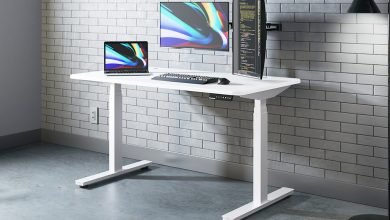
Ultimate Guide to Drain Repair: Prevent Costly Damage and Restore Flow
Clogged or damaged drains can lead to frustrating and costly plumbing issues. Whether it’s a slow-draining sink or a completely blocked sewer line, drain problems can escalate quickly if not addressed. Thankfully, effective drain repair techniques can prevent significant damage to your property and restore normal flow. In this ultimate guide, we’ll walk you through the process of drain repair, offering insights on how to handle common drain issues, what causes them, and how to prevent expensive repairs in the future.
Understanding Common Drain Problems
Drains are essential to the smooth functioning of your home, but they are also vulnerable to a variety of issues. Knowing what causes these problems can help you avoid costly repairs:
Clogs and Blockages
Clogs are the most common cause of drain problems. They usually occur when debris, grease, hair, or food particles build up inside the pipes. Over time, these materials create a blockage that restricts water flow. Common areas prone to clogs include kitchen sinks, bathtubs, and toilets.
Tree Root Intrusion
Tree roots often invade underground drainpipes, especially in older homes. The roots seek out moisture and can cause significant damage by cracking or obstructing pipes. If left untreated, tree root intrusion can lead to sewage backups or pipe collapse.
Pipe Corrosion
As pipes age, they can corrode or deteriorate, causing cracks or leaks. Corroded pipes are common in older homes, particularly those with metal plumbing. These leaks can compromise the structural integrity of your home and lead to costly water damage.
Broken or Collapsed Pipes
Pipes can break or collapse due to external pressure, ground shifting, or aging materials. When this happens, sewage can back up into your home, creating an unsanitary and hazardous situation.
Effective Drain Repair Methods
When you encounter drain problems, you have several repair options depending on the severity of the issue. Here are some common drain repair methods:
DIY Solutions for Minor Clogs
For small clogs, you can often fix the problem with simple tools and techniques. A plunger or a drain snake can help dislodge most blockages. Additionally, natural cleaning solutions like baking soda and vinegar can help clear grease and organic debris.
Hydro Jetting for Heavy Blockages
If your drain is severely clogged, hydro jetting can provide a powerful solution. This method involves using high-pressure water to clean the pipes, breaking apart tough blockages and removing residue that can cause future clogs.
Trenchless Pipe Repair
When dealing with damaged or corroded pipes, trenchless pipe repair is a non-invasive solution. It involves inserting a new pipe liner into the existing one, creating a durable, smooth interior. This method is ideal for addressing leaks or cracks without the need for digging up your yard or flooring.
Pipe Relining
Pipe relining is another trenchless technology that can restore the functionality of old or damaged pipes. A resin-saturated liner is inserted into the damaged pipe, hardening to create a new pipe within the old one. This method is efficient and cost-effective compared to traditional pipe replacement.
Preventing Future Drain Issues
While repair is often necessary, prevention is the best way to avoid costly drain repairs in the future. Here are some preventative tips to keep your drains in top shape:
Regular Drain Maintenance
Schedule regular drain cleanings with a professional plumber. This will ensure that your pipes are free from debris buildup, reducing the risk of clogs and blockages.
Avoid Pouring Grease Down the Drain
Grease and fat can solidify inside pipes, leading to stubborn blockages. Always dispose of grease in the trash instead of down the sink.
Install Drain Screens
Using drain screens in sinks and bathtubs will catch hair and large particles, preventing them from entering the pipes.
Be Mindful of What Goes Down the Drain
Educate family members about the types of materials that should never be flushed or washed down drains. Avoid flushing non-biodegradable items like wipes, cotton balls, or paper towels.
Conclusion:
Drain repair doesn’t have to be overwhelming or expensive. By understanding common issues, using effective repair methods and following preventative tips, you can keep your home’s drainage system in excellent condition. Whether you choose DIY methods for minor clogs or hire professionals for advanced repairs like hydro jetting or pipe relining, prompt attention to drain problems will help you prevent major damage and costly future repairs.
If you’re dealing with persistent drain issues or need a professional touch, don’t hesitate to contact a reliable plumbing service (like drain repair southampton services) to ensure that your drains are restored to optimal performance. By acting early, you can keep your plumbing system functioning smoothly for years to come.



